Chapter 13: Positive Emotions
Facial Expressions and Bodily Changes
In another study on facial expressions of positive emotions (Campos et al., 2013), participants recalled a time they felt a positive emotion and then posed that emotion of their faces. The eight positive emotions were amusement, awe, contentment, interest, joy, love, pride, and gratitude. To code the expressions, researchers used Ekman & Friesen’s (1978) FACS and developed their own coding system for bodily changes. Across all participants, the percentage that each action/bodily change appeared for each emotion was calculated to determine whether that change was important for each emotion (Table 11).
Table 11
Strength of Association between Behavior Change and Emotion
| Percentage Action/Bodily Change Present across all participants | Strength of Association |
|---|---|
| 0% – 24% | Not Associated with emotion |
| 24% – 49% | Weakly Associated with emotion |
| 50% – 74% | Moderately Associated with emotion |
| 75% – 100% | Strongly Associated with emotion |
Table 12 displays the action unit and bodily change findings per the percentages in the table above.
Table 12
Facial Expressions and Action Unit/Bodily Changes for each of the 7 Positive Emotions
| Emotion | Picture Reference | Moderate to Strong Association (Greater than 50%) | Weak Association (25% to 50%) |
|---|---|---|---|
| Amusement |
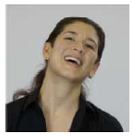 |
Action Unit six – 85%, Cheek Raiser. Action Unit 12 – 95%, Lip Corner puller. Action Unit 25 – 81%, Lips apart. Action Unit 26/27 – 68%, Jaw Drop, Mouth Stretch |
49%, head bounce Action Units 55/56 – 34%, Head tilt. Action Unit 1 – 25%, inner brow raise |
| Awe |
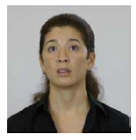 |
Action unit 25 – 86%, Lips apart Action units 26/27 – 80%, Jaw Drop/Mouth Stretch Action Unit 1 – 78%, Inner brow raise Action Unit 5 – 61%, Upper lidd raiser |
Action Unit 57 – 27%, Head forward |
| Contentment |
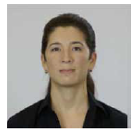 |
Action unit 6 – 56%, Cheek Raiser. Action unit 12 – 85%, Lip corner puller Action unit 24 – 60%, lip Pressor |
38%, Head nod. Action unit 25 – 26%, Lips apart |
| Interest |
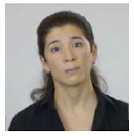 Weak Associations: Action Unit 24 – 38%, Lip pressor. Action unit 2 – 37%, outer brow raise. Action units 55/56 – 37%, head tilt. 37%, forward lean. Action unit 57 – 33%, Head forward. |
Action Unit 1 – 58%, Inner brow raise. Action unit 4 – 56%, Brow lowerer |
Action Unit 24 – 38%, Lip pressor Action unit 2 – 37%, outer brow raise Action units 55/56 – 37%, head tilt. 37%, forward lean Action unit 57 – 33%, Head forward |
| Joy |
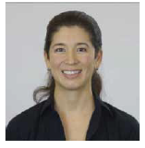 Weak Associations: 34%, Bounce. Action units 26/27-31%, Jaw Drop/mouth stretch. |
Action Unit 6 – 79%, Cheek Raiser Action Unit 12 – 97%, Lip Corner Puller Action Unit 25 – 50%, Lips Apart |
34%, Bounce. Action units 26/27 – 31%, Jaw Drop/mouth stretch/td> |
| Love |
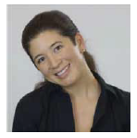 Weak Associations: Action units 55/56 – 49%, Head tilt. Action unit 43 – 26%, Eyes closed |
Action Unit 6 – 69%, Cheek Raiser. Action Unit 12 – 84%, Lip corner puller Action unit 25 – 54%, Lips apart |
Action units 55/56 – 49%, Head tilt Action unit 43 – 26%, Eyes closed |
| Pride |
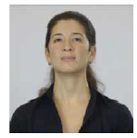 Weak Associations: 45%, Shoulders back. Action Unit 53 – 38%, Head Up. |
Action unit 6 – 70%, Cheek raiser. Action unit 12 – 80%, lip corner puller. 55%, sit up. Action unit 24 – 60%, Lip Pressor |
45%, Shoulders back. Action Unit 53 – 38%, Head Up |
Reproduced from “What Is Shared, What Is Different? Core Relational Themes and Expressive Displays of Eight Positive Emotions,” by B. Campos, M.N. Shiota, D. Keltner, G.C. Gonzaga, and J.L. Goetz, 2013, Cognition & Emotion, 27(1), p. 47 (https://doi.org/10.1080/02699931.2012.683852) Copyright 2013 by Taylor & Francis.
Below are some important findings:
- Researchers concluded that the seven above emotions displayed unique changes in facial expressions. Participants did not show consistent AU and bodily changes for gratitude.
- Except for awe and interest, Duchenne smiles (AU 6+12) were present in all positive emotions, although the intensity of this smile differed. Contentment and pride resulted in a less-intense Duchenne smile.
- For awe and interest, Duchenne or non-Duchenne smiles did not meet the 25% threshold.
- For amusement, the jaw drop and head bounce might occur during play experiences.
- The awe expression was similar to a fear expression. For both emotions, the following action units changed: 1, 5, and 26. To review the fear expression, go here.
- Most emotions resulted in facial expression changes, but few bodily changes. In fact, pride was the only emotion to show a strong association for a bodily change – sitting up.

